System Design vs Software Architecture : What You Need to Know
System design and software architecture are two sides of same coin, both integral to the process of creating a software system. But, they're not the same thing.

System Design Vs Software Architecture
Have you ever found yourself in a confusing situation, trying to differentiate between system design and software architecture? System design and software architecture are two crucial concepts that play vital roles in building robust and scalable applications. While these terms are often used interchangeably, they have distinct characteristics and purposes. This article aims to explore the differences between system design and software architecture, their relationship.
What is System Design?
System design and software architecture are two sides of same coin, both integral to the process of creating a software system. But, they're not the same thing. Think of it like this if building a software system is like constructing a house, then system design is the blueprint, and software architecture is the foundation.
Take a look! 👀 https://t.co/KqNN2ZsyBA
— Anurag Vishwakarma | अनुराग विश्वकर्मा (@anurag_30) July 3, 2023
Three-Tier Architecture on AWS | Credit: Ankit Jodhani
It's all about how the system will work and how the components will interact with each other.
Key components and considerations:
System design encompasses various components and considerations, including:
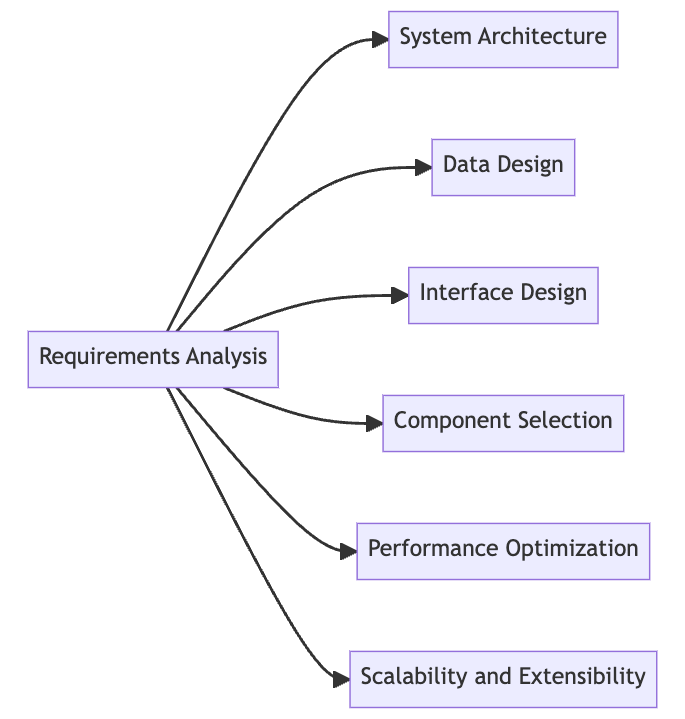
- Requirements analysis: Understanding the needs and expectations of the system's stakeholders.
- System architecture: Defining the high-level structure and organization of the system.
- Data design: Determining how data will be stored, accessed, and managed within the system.
- Interface design: Designing the interfaces through which different system components communicate.
- Component selection: Choosing appropriate technologies, frameworks, and tools for implementing the system.
- Performance optimization: Ensuring the system meets performance and efficiency requirements.
- Scalability and extensibility: Designing the system to handle future growth and changes.
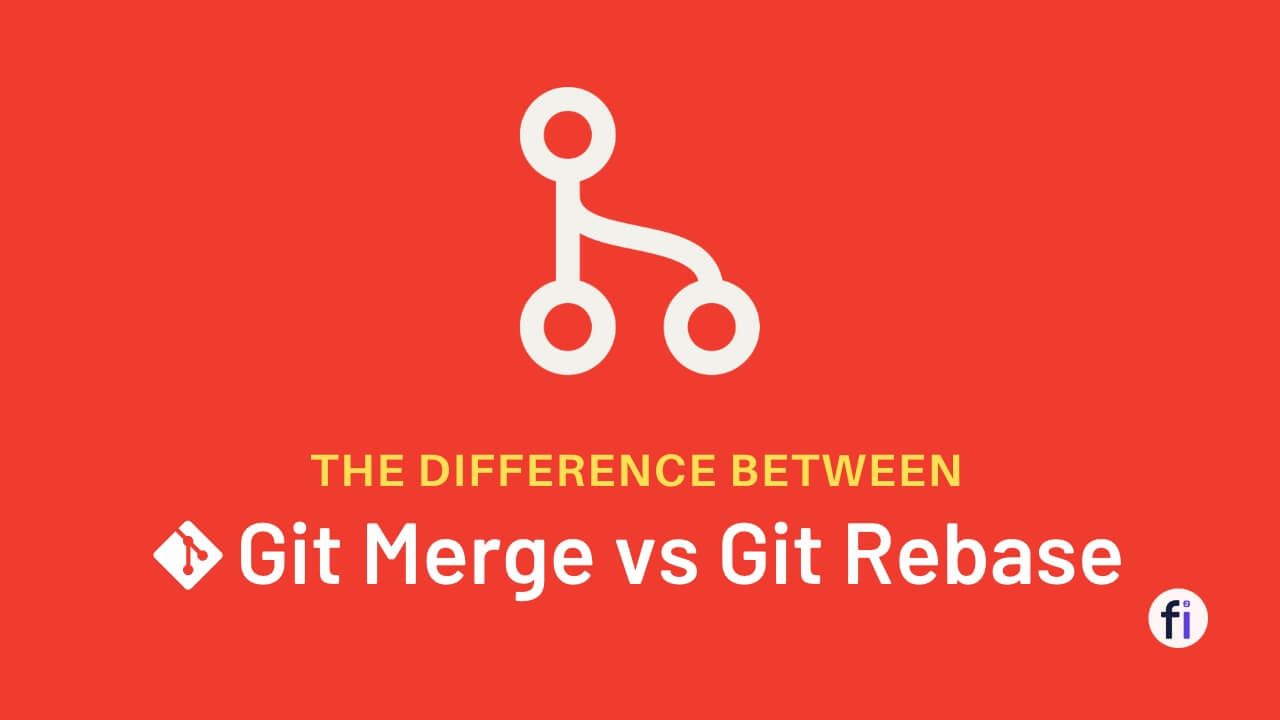
What is Software Architecture?
Software architecture is the high-level structure of a software system. It's the collection of the fundamental decisions about a software system that are costly to change. It's the 'big picture' that shows how the smaller pieces fit together and interact to form the whole system.

Key components and considerations:
Software architecture includes the following components and considerations:
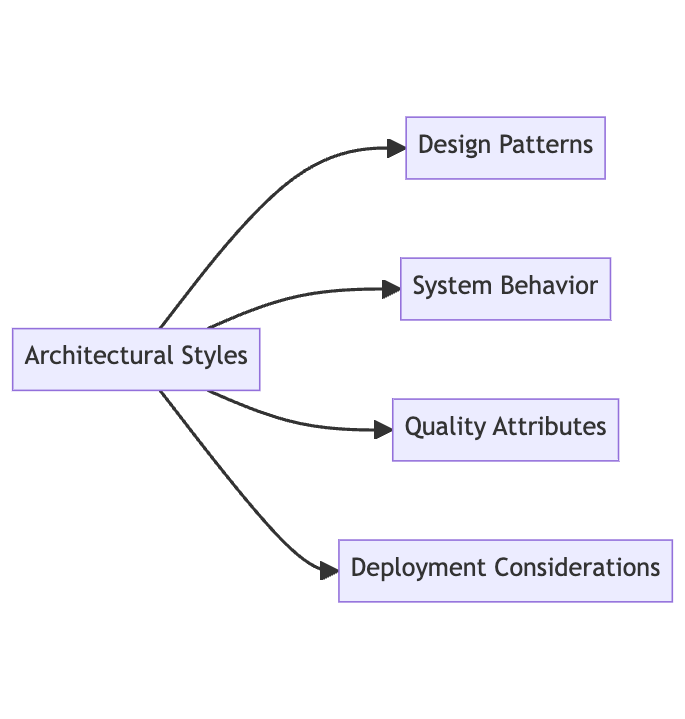
- Architectural styles: Choosing appropriate architectural styles (e.g., layered, client-server, microservices) that best suit the requirements and constraints of the system.
- Design patterns: Utilizing established design patterns to address common software design problems and improve maintainability and reusability.
- System behavior: Defining how the system responds to different inputs, handles errors, and ensures fault tolerance.
- Quality attributes: Addressing non-functional requirements such as performance, security, reliability, and maintainability.
- Deployment considerations: Determining how the software will be deployed and ensuring compatibility with the target environment.
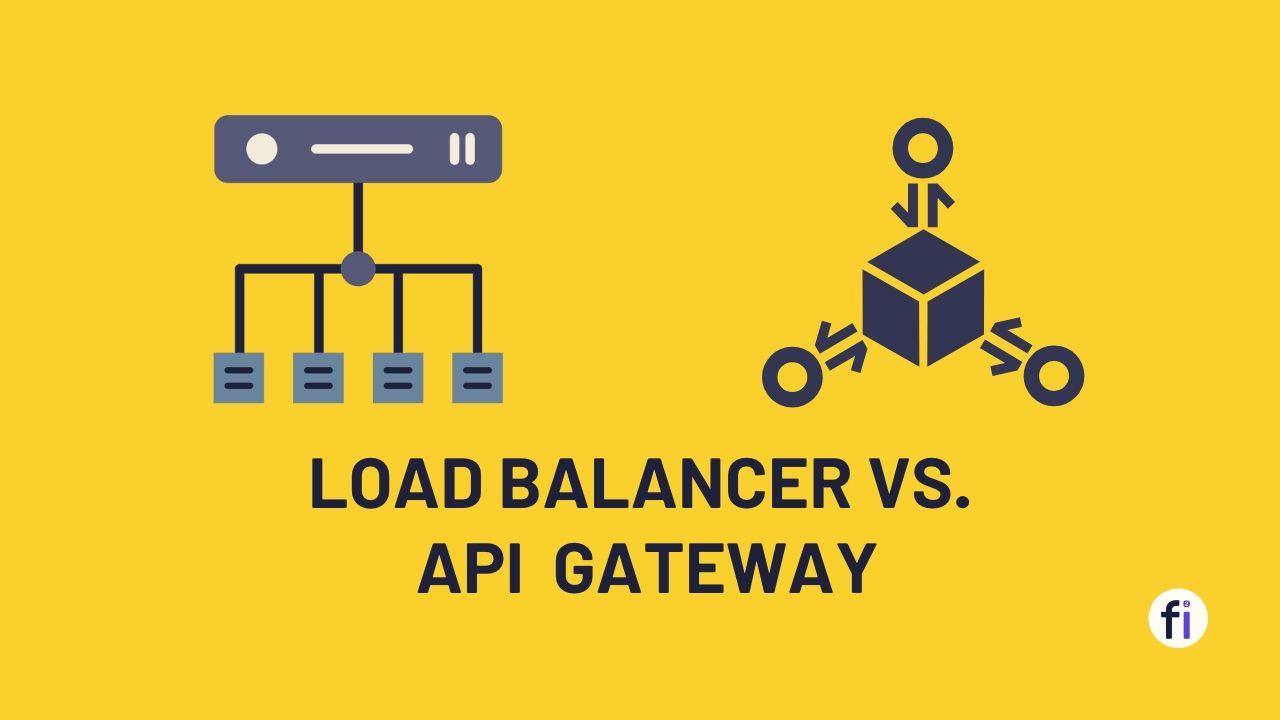
Why Do We Need Both?
Well, imagine trying to build a house without a blueprint or a foundation. Sounds chaotic, right? That's exactly what it would like develop a software system without system design and software architecture.
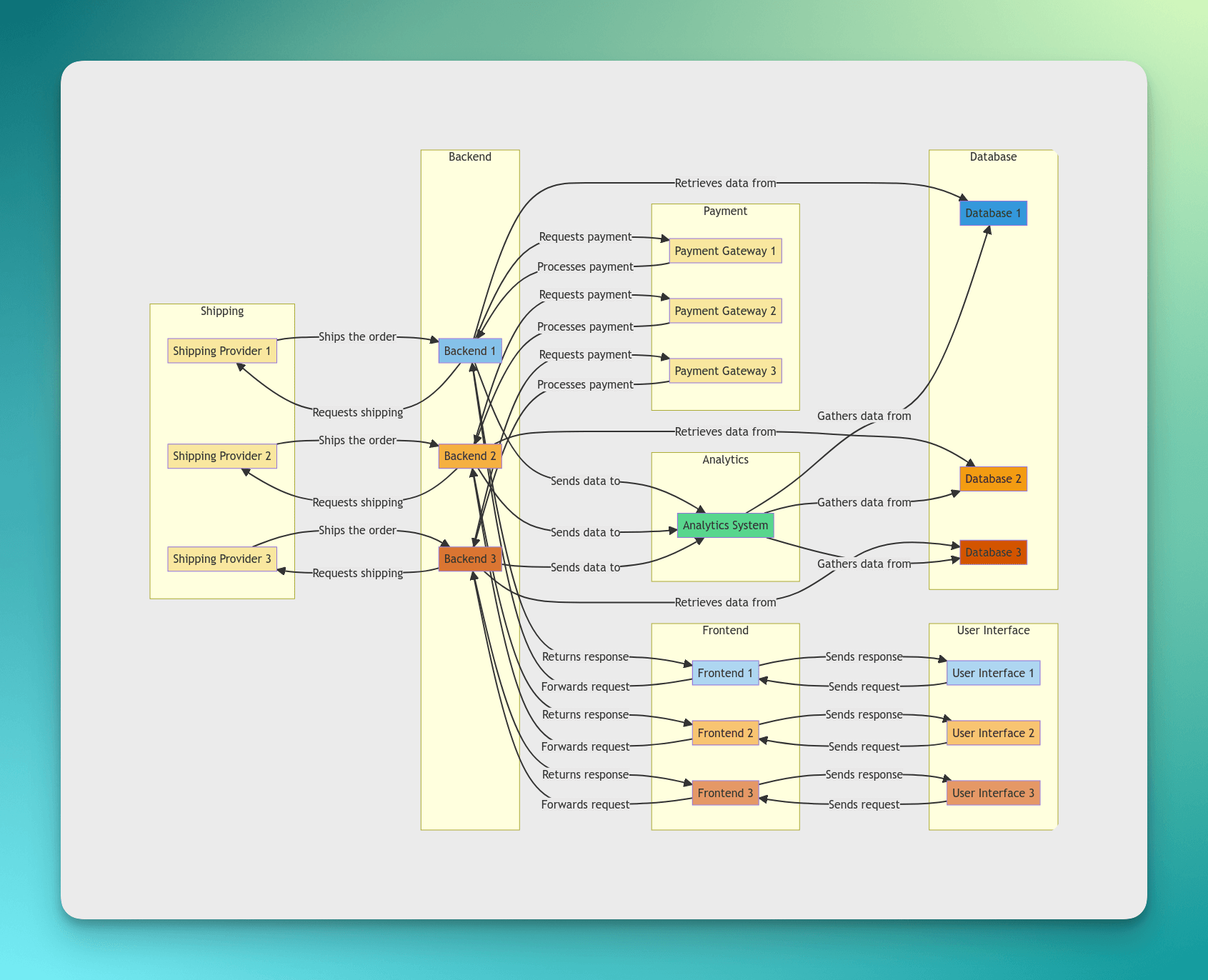
System design helps to break down complex problems into manageable parts. It's like a puzzle master who knows exactly where each piece goes. It ensures that all the components of the system work together seamlessly, like a well-oiled machine. Without system design, the development process would be like trying to navigate through a maze the dark.
Software architecture, on the other hand, provides a solid foundation for the system. It's like the skeleton that supports the body of the software. It ensures that the system is stable, reliable, and able to withstand changes and challenges. Without software architecture, the system would be like a house of cards, ready to collapse at the slightest disturbance.
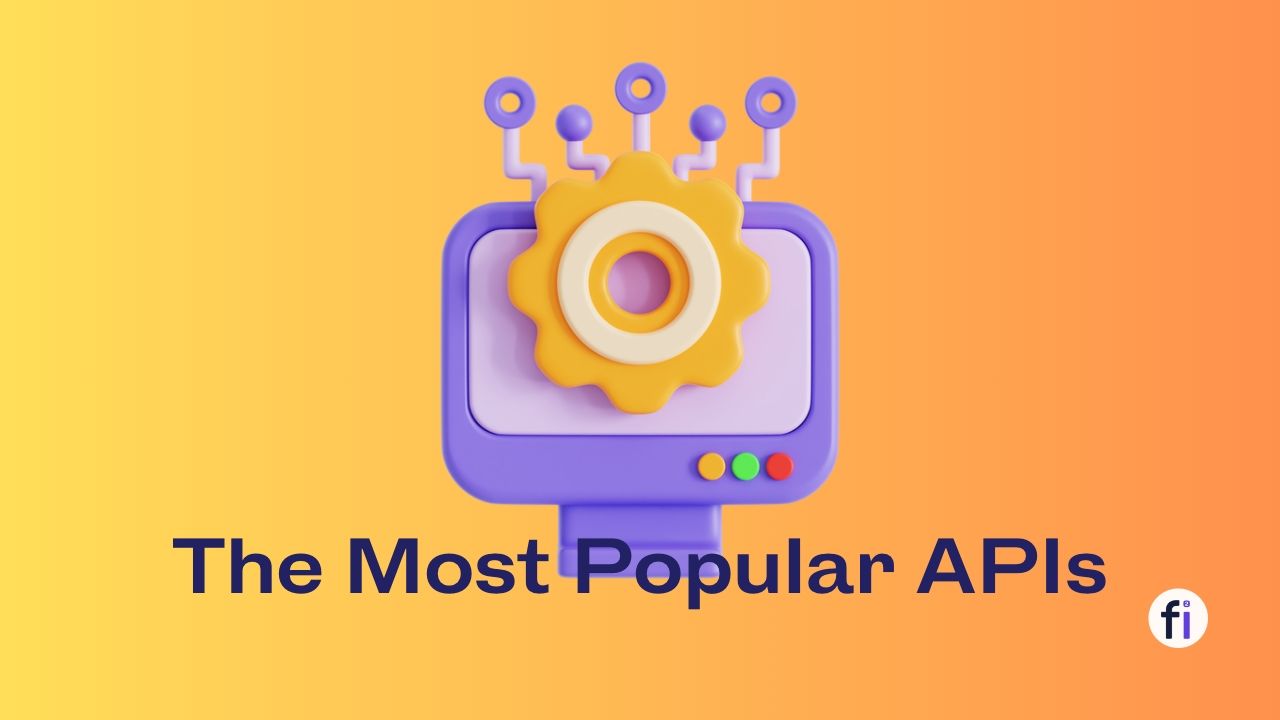
Differences Between System Design and Software Architecture
While system design and software architecture share similarities, they differ in several aspects:
- Scope and focus: System design primarily focuses on designing the system's components and ensuring they work together harmoniously. Software architecture, on the other hand, takes a broader view, considering the overall structure and principles guiding the software system's development.
- Level of abstraction: System design operates at a lower level of abstraction, dealing with specific components and implementation details. Software architecture operates at a higher level, focusing on system-wide design decisions and principles.
- Roles and responsibilities: System designers are often responsible for translating requirements into a tangible system design, ensuring its feasibility and technical viability. Software architects, on the other hand, oversee the overall design and guide the development team, making critical architectural decisions.

Relationship and Collaboration Between System Design and Software Architecture
System design and software architecture are closely related and complementary. They collaborate throughout the software development lifecycle to ensure the successful realization of a software system.
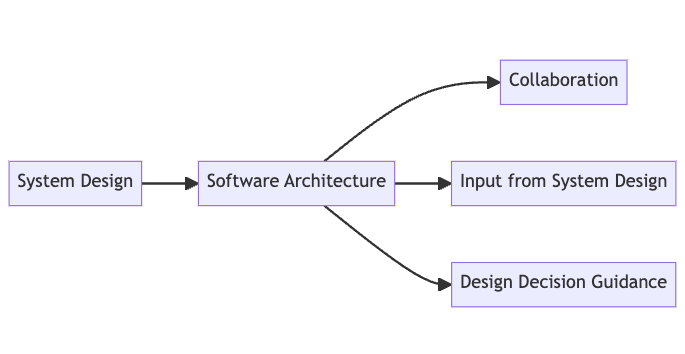
System designers and software architects work together to translate high-level requirements into a detailed system design. The system design provides valuable input to the software architecture, guiding the selection of architectural styles, design patterns, and deployment considerations.
Throughout the development process, system designers and software architects collaborate to address emerging challenges, refine the design, and ensure the system meets the desired quality attributes. Clear communication and collaboration between the two roles are essential for delivering a well-architected and functional software system.

Best Practices for Effective System Design and Software Architecture
To achieve effective system design and software architecture, consider the following best practices:
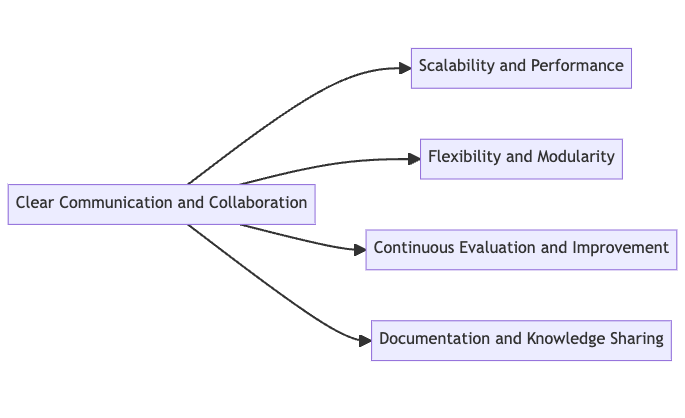
- Clear communication and collaboration: Foster open communication channels between system designers, software architects, and the development team to ensure a shared understanding of requirements, constraints, and design decisions.
- Considering scalability and performance: Design the system to handle increasing loads and ensure optimal performance by employing appropriate architectural patterns and technologies.
- Incorporating flexibility and modularity: Design the system in a modular way to promote code reusability, maintainability, and flexibility to accommodate future changes.
- Continuous evaluation and improvement: Regularly assess the system's design and architecture, identify potential areas for improvement, and incorporate lessons learned into future iterations.
- Documentation and knowledge sharing: Document the system's design decisions, architectural guidelines, and rationale to facilitate knowledge sharing and ensure the long-term maintainability of the software system.

Conclusion
In conclusion, system design and software architecture are two essential aspects of software development. They're like two peas in a pod, working together to create a robust, efficient, and effective software system. So, the next time you find yourself in a debate about system design vs software architecture, remember: it's not about which one is better, but about how they complement each other.
And that's a wrap! I hope this article has helped clear up any confusion you might have had about system design and software architecture. Remember, in the world of software development, understanding these concepts is like having a secret weapon. So, keep learning, keep exploring, and keep amazing software systems!
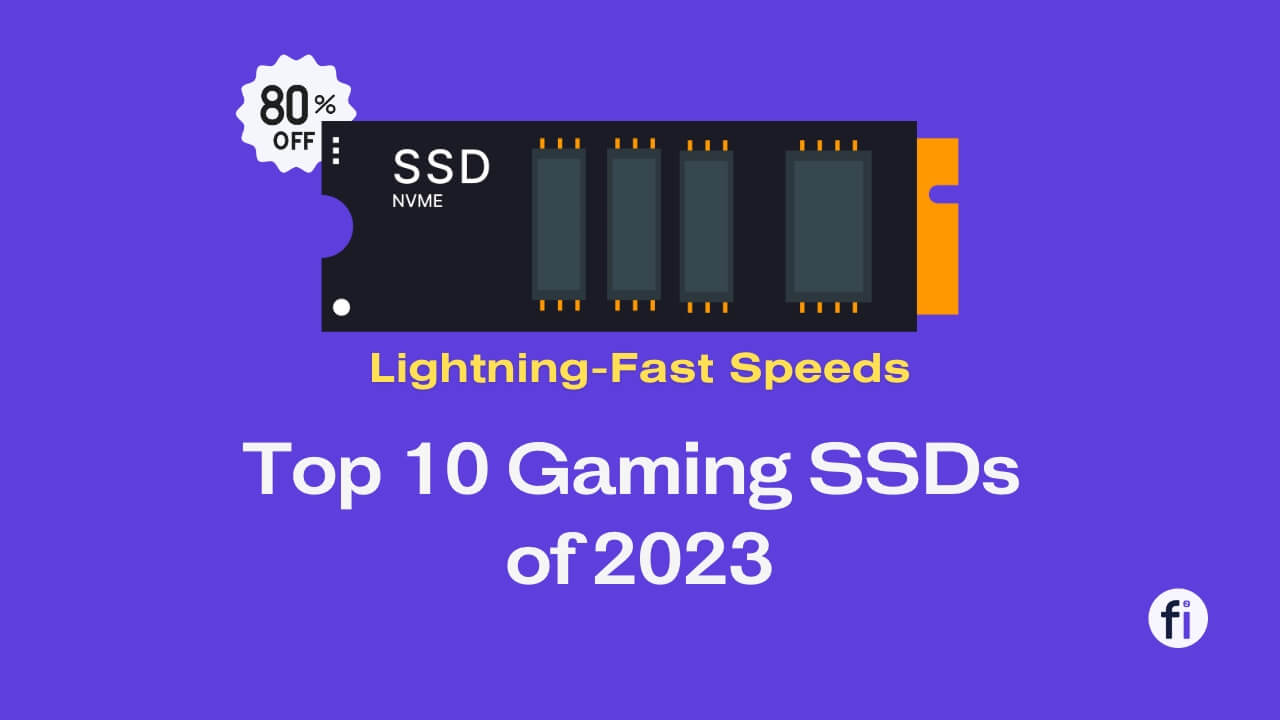


FAQs
Is system design more technical than software architecture?
While both system design and software architecture involve technical aspects, system design focuses on the detailed implementation and integration of system components, whereas software architecture takes a broader view, encompassing overall design decisions and principles.
Can one person fulfill the roles of both system designer and software architect?
Yes, depending on the size and complexity of the project, one person can fulfill both roles. However, in larger projects, separate individuals or teams often handle system design and software architecture to ensure a balanced and comprehensive approach.
How do system design and software architecture contribute to software quality?
System design and software architecture play crucial roles in ensuring software quality. A well-designed system and a robust architecture provide a solid foundation for building scalable, maintainable, and high-performance software systems.
Are there specific tools or methodologies for system design and software architecture?
There are several tools and methodologies available for system design and software architecture, such as UML (Unified Modeling Language), design patterns, and architectural frameworks like TOGAF (The Open Group Architecture Framework) and Zachman Framework. The choice of tools and methodologies depends on the project's requirements and the organization's preferences.
How can system design and software architecture impact project timelines?
Effective system design and software architecture can have a significant impact on project timelines. A well-thought-out design and architecture help identify potential challenges early on, minimize rework, and streamline the development process, leading to shorter development cycles and reduced time-to-market.

